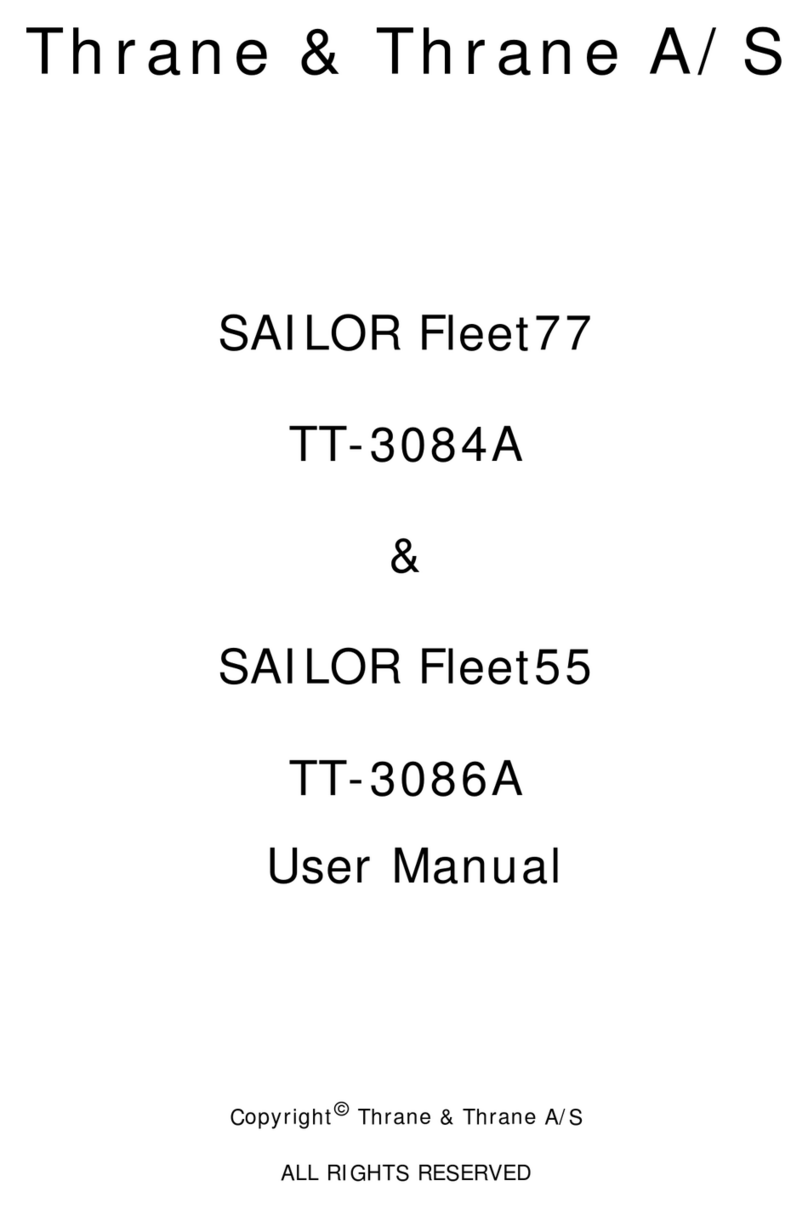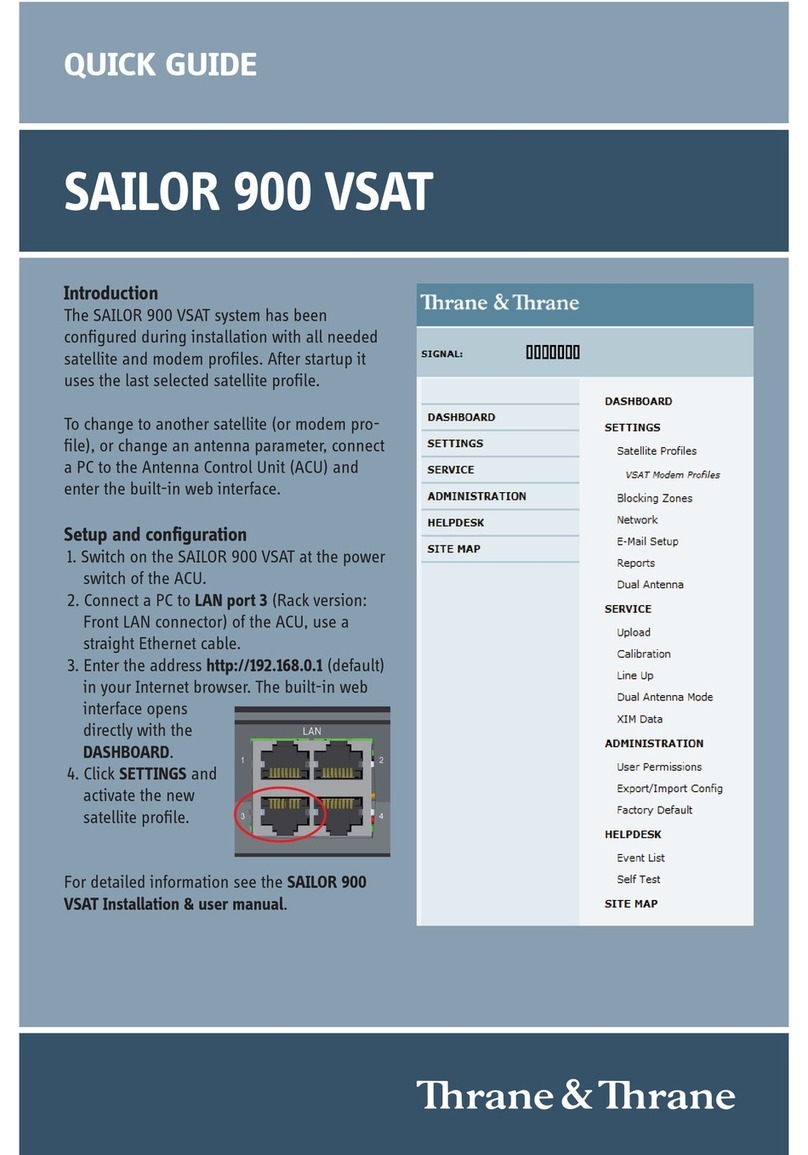Thrane&Thrane SAILOR TT-3084A Fleet 77 User manual
Other Thrane&Thrane Antenna manuals

Thrane&Thrane
Thrane&Thrane EXPLORER 500 User manual

Thrane&Thrane
Thrane&Thrane EXPLORER 700 User manual

Thrane&Thrane
Thrane&Thrane SAILOR 900 VSAT System User manual

Thrane&Thrane
Thrane&Thrane SAILOR 6120 User manual

Thrane&Thrane
Thrane&Thrane EXPLORER 500 User manual

Thrane&Thrane
Thrane&Thrane SAILOR 150 User manual

Thrane&Thrane
Thrane&Thrane Explorer 527 User manual

Thrane&Thrane
Thrane&Thrane TT-3720A EXPLORER 700 User manual

Thrane&Thrane
Thrane&Thrane SAILOR 6110 User manual

Thrane&Thrane
Thrane&Thrane Explorer 300 User manual
Popular Antenna manuals by other brands

DAVIS
DAVIS Windex AV 3160 installation instructions

Belden
Belden Hirschmann BAT-ANT-N-14G-IP23 Mounting instruction

Vtronix
Vtronix YHK Fitting instructions

KVH Industries
KVH Industries TracVision 6 Technical manual

Leica Geosystems
Leica Geosystems GS10 user manual

Sirio Antenne
Sirio Antenne Gain-Master manual

Feig Electronic
Feig Electronic ID ISC.ANTH200/200 Series manual

TERK Technologies
TERK Technologies TV44 owner's manual

TERK Technologies
TERK Technologies SIR3 owner's manual

Directive Systems & Engineering
Directive Systems & Engineering DSE2324LYRMK quick start guide

HP
HP J8999A instructions

MobilSat
MobilSat MSP-S Mounting instructions




















